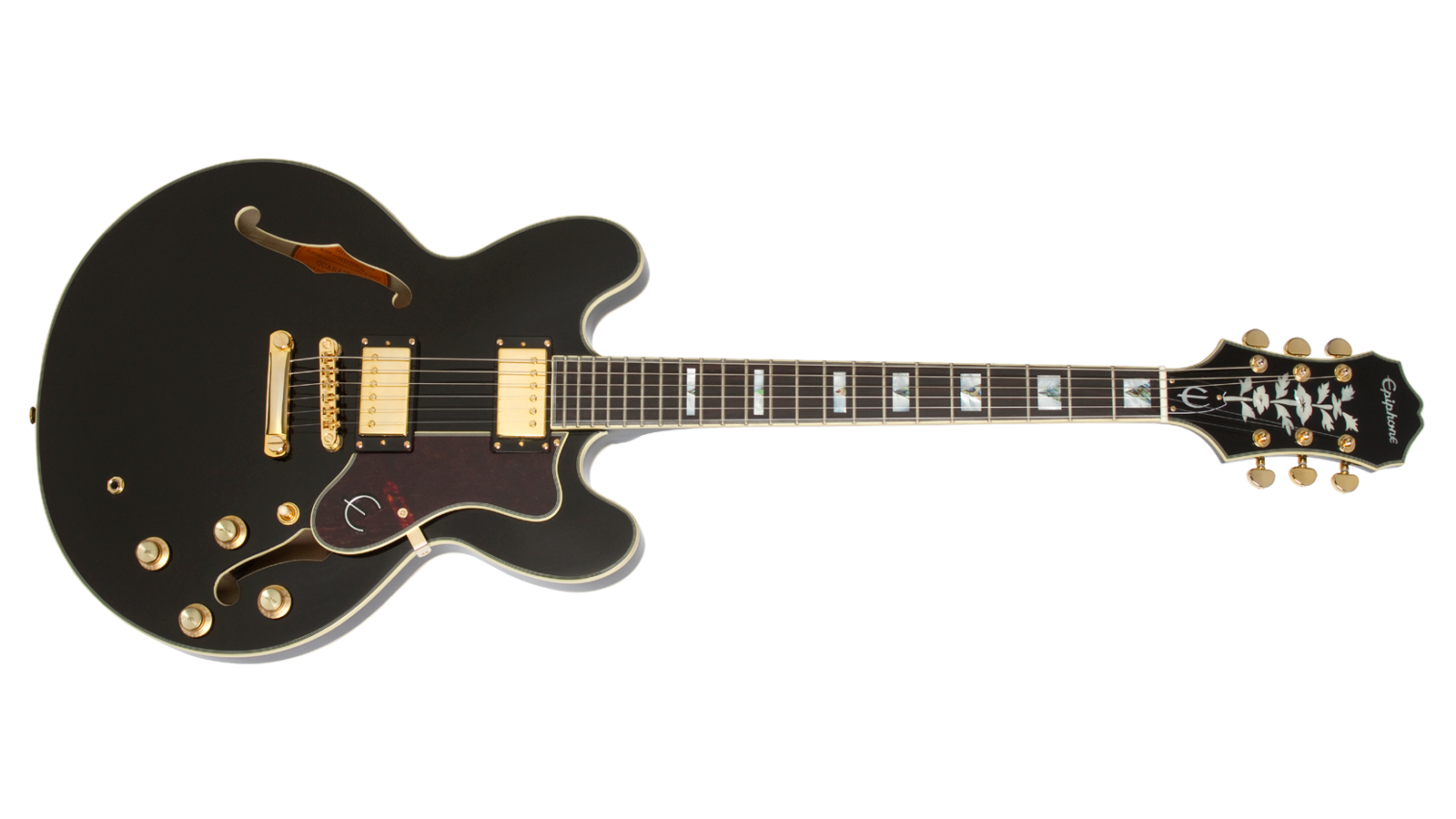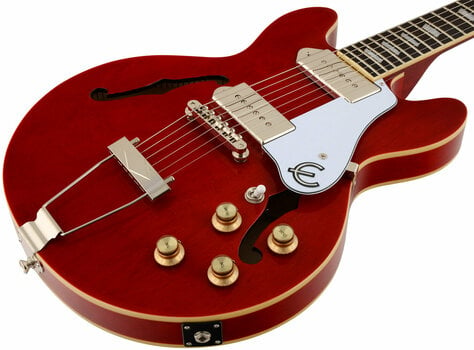Epiphone Casino Prezzo
Very cool John Lennon inspired Epiphone Natural Casino MIK in 2002 by Peerless. The Peerless Casinos have gained the reputation of being the better Casinos.
Epiphone Casino Worn Hollowbody - Worn Olive Drab Hollowbody Electric Guitar with Maple Top, Maple Back and Sides, Mahogany Neck, Laurel Fingerboard, and 2 Single-coil Pickups - Worn Olive Drab $ 449.00. Mar 27, 2020 - Just a board featuring one of my favorite guitars! The Casino has a sound that is unique! You can identify it from a room full of guitars and amps and using only sound, it will always stand out!!!. Since 1961, the legendary Casino has been Epiphone’s best-selling archtop and a rock ‘n’ roll standard. First introduced in 1961, the Casino was just one of several new thinline archtops designed and produced at the company’s adopted new factory in Kalamazoo, Michigan that it shared with one-time competitor and new partner, Gibson. The Casino was first adopted by Keith Richards of The.
Modifications to the guitar that made it a better player (just like John Lennon did) was to change to Gold Grover tuners and now stays in tune better. Also the obnoxiously thick factory coat of Poly has been finely sanded down to a satin/matte finish (except on the headstock). I removed the ugly white pickguard and put it way. This guitar looks and feels GREAT, resonates better (it just doesn’t look like it was dipped in plastic anymore). I even added a black grommet under the 3-way switch like John had on his.
The pickups sound amazing with all of the bite and snarl that you would expect from P90’s. Great Beatle inspired guitar.
The Epiphone Casino is a full hollow body guitar that has no center block of wood inside like the Gibson 335 has. Gibson 330 is quite similar to the Casino, but for some reason was not as popular. Gibson added the center block to reduce feedback as players were cranking it up on stage.

John Lennon with his Casino. John removed the pickguard and sanded the guitar down to allow it to breath from under the thick poly coat allowing it to sound better. He also swapped out the tuners.
John Lennon with his Casino Left and Right – This is actually the same guitar in both pictures
Of all the guitars made famous by the Beatles, the only one that John, Paul, and George had in common was the Epiphone Casino. Each owned one and used it for countless recordings and performances. The Epiphone Casino was a very important guitar to the Beatles. Paul McCartney is was the first to get a Casino and John and George followed.
After being influenced to purchase it by his friend, blues musician John Mayall, McCartney said, “You’d go back to his place and he’d sit you down, give you a drink, and say, ‘Just check this out.’ He’d go over to his tape deck, and for hours blast you with B.B. King, Eric Clapton… he was sort of showing me where all of Eric’s stuff was from. He gave me a little evening’s education. I was turned on after that, and bought the Epiphone Casino.” Mayall recalls the late-night record sessions. “I showed him my hollow body guitar that I’d bought when I was in the army in Japan in 1955.
The right-handed Epiphone Casino ES-230TD (serial number 84075) that McCartney purchased at the end of ’64 has a rare early-style Gibson-design headstock rather than Epiphone’s later hourglass-shaped headstock. The Epiphone Casino and the Gibson ES-330 were both built in the same Gibson US factory in those days. Later all the Epiphones were made overseas.
McCartney used his Casino extensively in the studio with The Beatles, including the memorable lead-guitar break on “Ticket To Ride.” He also used it throughout his solo career, and still owns the guitar.
Paul still gigs with his Casino sometimes
Gibson had been making thinline electric guitars since 1955 (the Stathopoulos had never introduced a thinline Epiphone), and Gibson introduced the thinline double-cutaway, semi-hollow ES-335 in 1958. Almost concurrently, a similar (and fancier) model appeared in the Epi line – the Sheraton. A year later, Gibson introduced a stepped-down model with the same body shape but with a fully hollow body and single-coil pickups, called the ES-330. In ’61, a model similar to the Gibson ES-330 showed up in the Epiphone line as the Casino.
Epiphone Casino and 1967 Gibson ES-330 Hollow Bodies with P-90s from my collection
Structurally, the Casino was the same as the ES-330, with a thinline, double-cutaway hollow body. Functionally, too, it was the same guitar, with one or two “dog-ear” P-90 pickups (with black covers), a Tune-O-Matic bridge, and a trapeze tailpiece. A vibrato was optional. Cosmetically, both models had single-ply binding on the top, back, and fingerboard, pearl dot fingerboard inlays, and an inlaid peghead logo with no other ornamental peghead inlay. The Casino was offered in sunburst or Royal Tan finish while the ES-330 was offered in sunburst or natural.
In the spring of ’66, during recording sessions for Revolver, John Lennon and George Harrison both bought Casinos. The two were virtually identical guitars except Harrison’s had a Bigsby vibrato, while Lennon’s had the standard Epiphone “trapeze” tailpiece. Lennon’s did have a small black ring mounted around its pickup selector switch. Both had the more common Epiphone-style headstock (unlike Paul’s) and were fitted with gold-colored Volume and Tone knobs.
John with Casino in famous rooftop concert
The first time John and George performed live with their Casinos was when The Beatles made an appearance on the popular British TV show “Top Of The Pops” on June 16, 1966. The lipped their new single, “Rain” and “Paperback Writer.”
In early 1968, while the Beatles were in India, studying transcendental meditation with The Maharishi and friends, including Donovan. Donovan convinced the trio to sand the finish off their instruments, telling them how a guitar sounds better without a heavy finish. After returning to London, during sessions for “White Album,” Lennon and Harrison sanded their Casinos. Lennon primarily played his newly stripped Casino for the sessions. Harrison said that once they’d removed the finish, they became much better guitars. “I think that works on a lot of guitars,” he explained. “If you take the paint and varnish off and get the bare wood, it seems to sort of breathe.” With the completion of the White Album, promo clips were filmed for the single “Revolution”/“Hey Jude” showing John using his now natural Casino.
On December 11, 1968, Lennon appeared as a special guest for the filming of The Rolling Stones’ television special, “Rock ’n’ Roll Circus,” which included a memorable performance by the supergroup Dirty Mac, whose members included Eric Clapton on guitar, Keith Richards on bass, Mitch Mitchell on drums, and Lennon playing his Casino.
Upgrading My Epiphone Casino
I have loved playing this Epiphone Casino over the years I owned it. Decided to make some improvements as this guitar is a keeper for sure. I was never all that happy with the pickups as they tended to sound a bit harsh at times. So I re-wired the Casino with a wiring harness from RS-GuitarWorks using their 335 vintage upgrade kit.

Swapping out pickups with chrome covers on these imported Epiphone is not was easy as it is harder to find the replacements with the correct string spacing that will fit. So I shipped my old pickups to Lollar for re-build. They turned them around in a week. They use your chrome covers, but totally re-build the pickups. They send back your old ones without the covers and the new ones are all ready to mount.
New Lollar pickups and wiring are a lot better sounding and quieter as well. If you never re-wired or swapped pickups on a hollow body guitar I suggest you send it over to your local luthier. Not as easy as a solid body guitar. You need the right tools and knowledge to “snake” the wiring through the F-Holes and pickup openings. Plastic tubing is a great help. You also need to drill or ream out for the new volume/tone pots. The Asian pots are metric and the new ones are US. Swapped out the knobs with genuine Gibson parts.
Well worth the cost and work in my opinion as it greatly improved a guitar I already loved.
Read “The Beatles’ Casinos” on Vintage Guitar.
From My Beatles Collection
George’s Gretsch Country Gentlemen – John’s Epiphone Casino – Paul’s Hofner Violin Bass
John Lennon complains about his Epiphone Casino
Since 1961, the legendary Casino has been Epiphone’s best-selling archtop and a rock ‘n’ roll standard. First introduced in 1961, the Casino was just one of several new thinline archtops designed and produced at the company’s adopted new factory in Kalamazoo, Michigan that it shared with one-time competitor and new partner, Gibson. The Casino was first adopted by Keith Richards of The Rolling Stones who used a Casino to record the demo for “Satisfaction” at Chess Records in Chicago. Howlin' Wolf took a Casino on his first tour of the UK, appearing on Thank Your Lucky Stars. Shortly afterwards, John Lennon and George Harrison bought Casinos for the Beatles 1966 world tour. Featuring Dogear P-90T Classic™ pickups and a 5-ply Maple body with Basswood top bracing. Available in Natural, Vintage Sunburst, and new Turquoise color finishes.Finish
{{activeFinish.Name}}Handedness
{{guitar.Model}} Videos
{{activeVideo.Name}}
P-90 Single Coil Pickup
Legendary Tone
First introduced in the early 1950s, Gibson's legendary P90 single coil pickup produced a raw powerful tone that helped define the blues and rock and roll in their formative years. Today, the P90's traditional combination of high output and brilliant tone is still considered a favorite among many top musicians. Known by such familiar nicknames as the 'Soapbar' and the 'Cobalt,' the P90 still cuts through any type of music, all while displaying amazing tonal sensitivity for everything from blues and rock to mellow jazz riffs. It's perfect as a vintage replacement, and features vintage, braided two-conductor wiring. It's also fully wax potted to eliminate any chance of unwanted microphonic feedback.
Casino Specifications
Body
Neck
Hardware
Epiphone Casino Miglior Prezzo

Epiphone Casino Prezzo Grand
Electronics
Epiphone Casino Prezzo Entertainment
Miscellaneous
In order to continually improve the design, quality and performance of our products and instruments and to make use of the best materials at all times, Epiphone reserves the right to change specifications without notice.